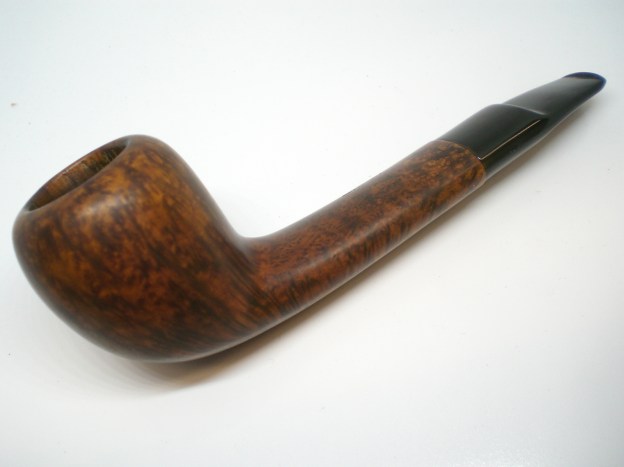It’s been quite a while since I’ve had a pipe on my work bench that wasn’t made in Britain, but this Stanwell caught my eye. It looked pretty well loved, but the details below made me give it a second glance, and make a modest offer to the seller. I know next to nothing about Stanwell pipes, but only that a Reg number meant an older pipe. The “Hand Made” stamp on the briar and “Hand Cut” stamps also drew my attention. Registration number pipes were apparently made in the late 60’s to the early 70’s when it was discontinued. The previous owner thought enough of the pipe to scratch in his name, thankfully lightly, and on the bottom of the shank.
The shape 36 was a little bit of a puzzler, but I later learned thru a friend and Pipedia that this was a Sixten Iversson shape. Stanwell made the shape 36 in two versions, an earlier one by Ivarsson, like this one and in the 1970’s by Anne Julie. From Pipepedia:
36. Two versions of this shape number
a) Freehand, slightly bent, oval stem and mouthpiece, saddle mouthpiece, by Sixten Ivarsson.
b) Freehand, bent, oval stem and mouthpiece, by Anne Julie – 1975.
I did find this catalog page showing the Ivarsson shape 36.
I didn’t find any other information the combination of Selected Briar, Hand Cut and Handmade nomenclature.
Below is the pipe as it was received. The bowl top had been abused, it had some dents and dings and the heaviest oxidation coating I’ve seen in a long time. Getting that off and preserving the stem stamps was going to be a challenge.
I used a piece of worn scotch-brite the get the build-up from the bowl top, than a piece of 2,000 wet paper to remove some of the darkening. A wet cloth and an electric iron were used to lift out some of the dings. The cake was removed with my reamer set and a piece of 320 sandpaper wrapped around one bit to finish it. There was one section of the bowl that was slightly irregular and the 320 paper smoothed that out a bit. The bowl was buffed lightly with White Diamond and several coasts of carnuba wax. Getting the oxidation from the stem was challenging, particuarly working around the stamping. There were several tooth marks, most of which were raised with heat. I avoided those areas and used a piece of Magic Eraser to diminish the oxidation around the stamps. I started with 800, than 1500 and 2000 grit wet paper, than 8,000 and 12,000 micromesh sheets. The stem was buffed with White Diamond rouge and Meguiars Plastic Polish. A few teeth pin pricks remained, but didn’t seem necessary to fill. Below is the finished pipe.




















